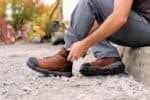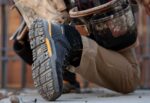Some of the prominent cowboy heel types are roper, fowler, walking, underslung, spiked, cowboy, riding, and fashion. So, why does one differ from the other? Let’s examine it closely.
Talking about the variant types of cowboy boots, the major ones that made an influential appearance throughout history are the western or the classic one and the roper one.
The classic one is understood for its tall boot shaft, at the least mid-calf with an angled cowboy heel. A rounded toe is also visible in the classic one compared to the other style.

The early 1940s stands as the mother of this style. The cowboy-style has been one of the most applauded and looked upon boots styles over centuries.
The roper boots maintain a shorter shaft with a rounded toe and comparatively lower heels. Later with its exclusive style and appealing features, it took a noteworthy space in the fashion field too.
The cowboy heel style went on innovating itself over centuries. Check out the different types of heels on cowboy boots
Different Types of Heels on Cowboy Boots
The cowboy boots were differentiated and loved for various reasons. One such reason was the innovations and variations in the heels.
The heels even in the current scenario hold much consideration, as some may be more loved as per the individual preferences. So, what is your favorite type of heels?
Let’s see what is the difference between heels on cowboy boots. Here are some of the relevant types of cowboy boots.
1.) Cowboy Heels
Cowboy heels are popular on the horse riding field due to the justice it serves to the riding. The heels made for horse riding are peculiarly made to withstand the odds and unpredictable situations that can be encountered in the riding experience.
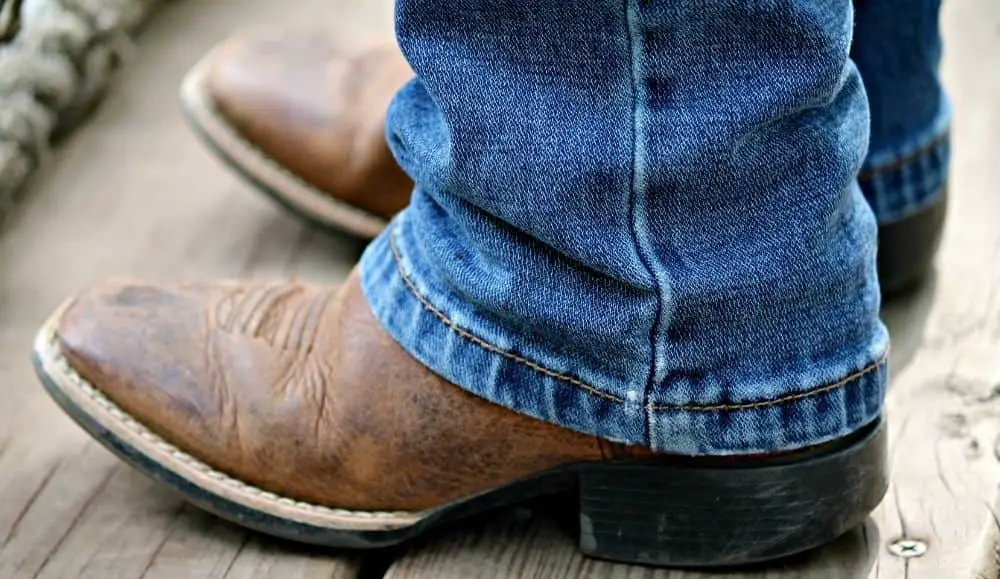
The cowboy heels are tall angular heels with a thick foundation that helps in gaining perfect boot control while riding a horse. Often, the firm control in the saddle is one of the primary reasons why cowboy boots went viral during the past centuries.
2.) Underslung Heels
What is an Underslung Heel?
From 1880 to 1960, most cowboy boots had higher heels. To keep them from having a heavy, blocky shape, bootmakers hand-fashioned the backs of the heels to angle toward the foot. All boots that you could not squeeze a penny between where the heel and sole met are underslung heels.
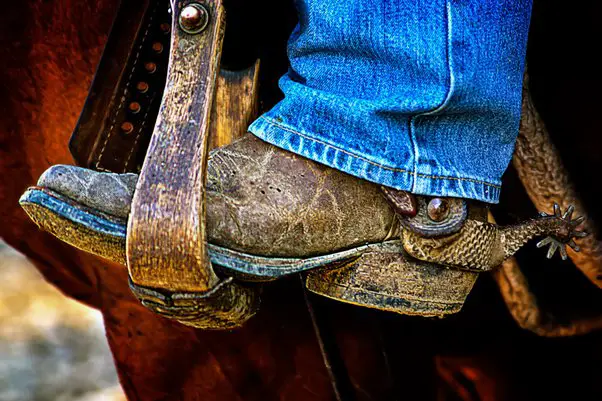
Why do Cowboy Boots have Underslung Heels?
The nook of that slant is what’s going to help keep the boot in a stirrup. This type of heel is known as an underslung heel. And because there’s no relatively sharp, 90-degree angle at the back of the heel, it’s gentler on the horse since there’s less friction.
3.) Spiked Heels
Spiked heels are high heel boots with 3-4 inches high heels. The main feature of spike heels emphasis is the value of adding height and comfort to the person who wears them.
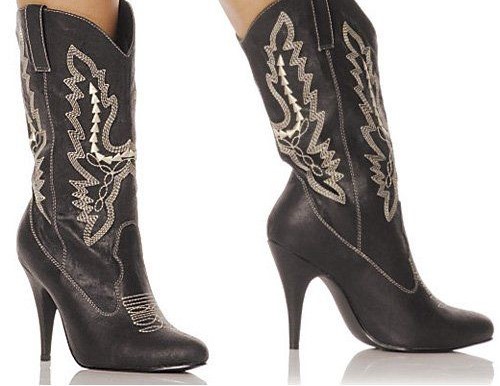
The heels are broad and flat, hence avoiding much friction in walking and riding. The spoked heels tend to narrow and make it different from other forms of heels that come under cowboy boots.
4.) Roper Heels
Tracing the history of roper heels will land on the first duke of Wellington, Arthur Wellesley. The straight-cut heels which are commonly known as the roper heels had their pride with the pride of the war hero, Arthur Wellesley.
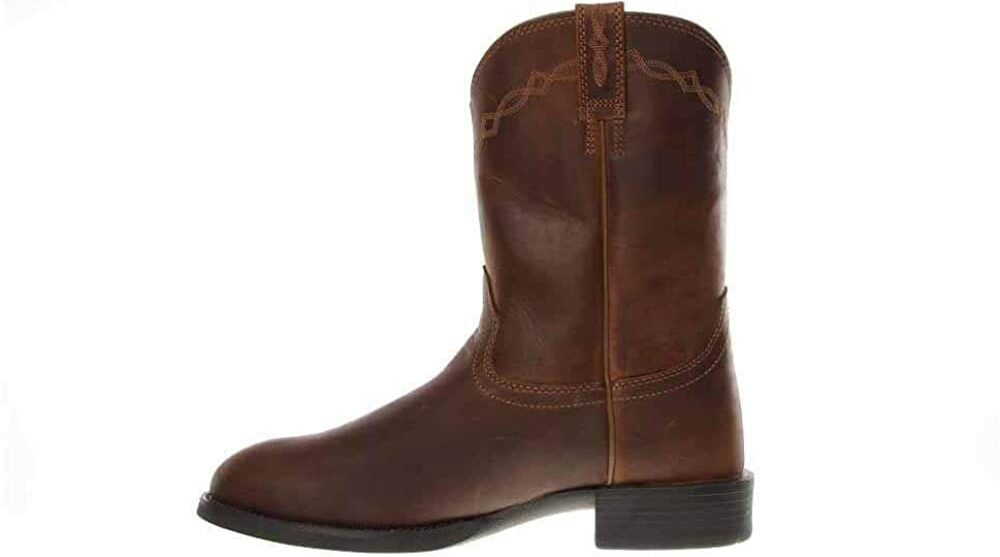
The roper heels as mentioned above had short heels compared to cowboy heels with pointed toes and tassels. This came to be prominent with its fashion sense rather than its usage. While the cowboy boots had their purpose.
5.) Fowler Heels
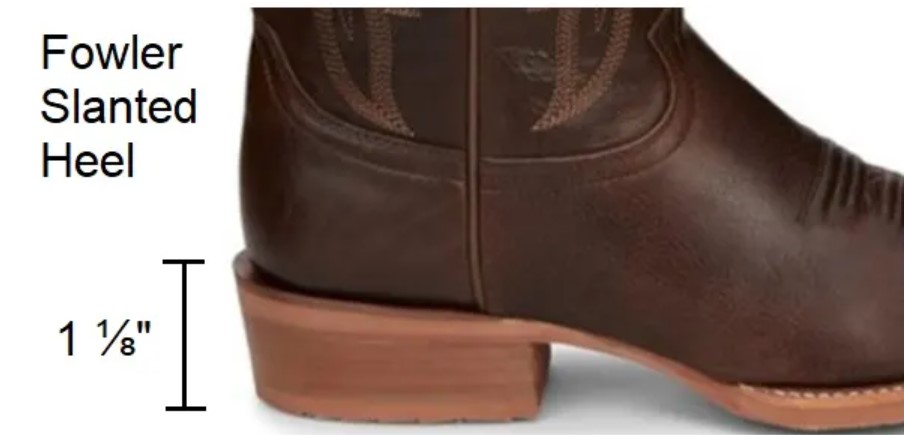
Fowler Heels are perfect for walking in general and for hooking into stirrups. This is the most comfortable and stable heel design for walking. Just like walking heels, fowler heels are meant for comfort and an easy walk experience with style.
6.) Walking Heels
Just like the name suggests, the walking heels are one of the most commonly used heel types and adopted in the cowboy heels type by men of past ages for walking and common chores.
Compared to any other heel type, the walking heels are cozy, comfortable, and easy to walk with, without compromising fashion and elegance. Men and women unarguably loved walking heels as it was the icon of extra comfort and balance.
7.) Riding Heels
Riding heels are one with a 2-inch height and a slow slanting posture. The riding heel is perfect for riding as well as walking.
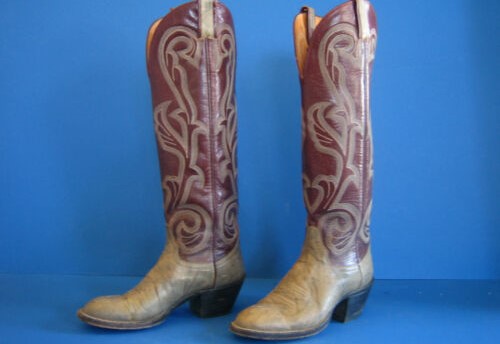
The heels are designed in a way to provide a perfect balance for the riders. Both men and women preferred these heels to walk through long lands and horse riding.
8.) Fashion Heels
Fashion heels are perfect for going out on the town or for adding a western twist to an otherwise normal outfit. The heels are often tall – two inches or more – and made from rubber to quieten the sound of footsteps.
Fashion heels, again as the name suggests promoted much of the fashion scenario rather than any other usage. It will hold some of the innovations in fashion and the trends of the time.
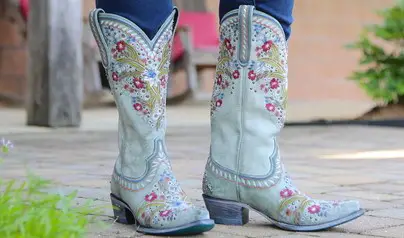
Throughout history, the fashion heels had their variations and transformations as per the changes in the fashion world. Women preferred such fashion heels more as compared to men in the initial centuries.
It holds a rubber sole with soft materials. In height, the heels are slightly higher than the average cowboy boots. But that doesn’t hinder the comfortable side of the boots.
They are slant and ideal for someone who embraces fashion. People used such boots frequently and adopted them with different outfit patterns.
Cowboy Boots Vs Ropers
Cowboy Boots |
Ropers |
| High heels | Lower heels |
| Long Shaft | Short Shaft |
| Tall boot shaft reaching to the mid-calf with an angled heel | Short shaft with round toe and short heels |
| Origin in the Western United States in the 1800s | Origin in Wellington in the 19th century |
Bottom Line
Heels never go out of fashion! Even if every century tries to bring massive innovation to it, they still keep on track and serve to be the favorite of many.
What makes boots more appealing is not just the fashion and the admiration it provides, but also the efficient comfort and unarguable firmness it provides in walking and riding.
In western culture, boots are always on-trend. Unique patterns, shapes, and heel types are always embraced no matter which time of the month it is. The fashion world too adorns it as one of the significant tools to experiment with
Wear your boots and hold your heads up! Bang with confidence in each step!
See also: How Much Does a Cowboy Boot Heel Replacement Cost?
FAQs
Which Are the Best Heels in Cowboy Boots?
Mainly, cowboy boots come with cowboy heels. They are tall angular heels with a thick base that holds perfect boot control while riding a horse.
What is the Material Used in Cowboy Heels Production?
Leather, synthetic, and rubber are the sole source of cowboy heels production. Also, rubber heel caps are said to be more stable compared to others. Each boot heel serves variant purposes, thus, holding on to the purpose the material preference can vary.
What Are Underslung Heels?
Underslung heels come with a 90-degree angle at the back with a gentle shape and structure compared to cowboy heels. It causes less friction and helps the riders hold firmly while riding. In turn, it provides perfect balance too.
What is the Lowest Heel on a Cowboy Boot?
Low heel cowboy boots are also popular. They are around 1 ½ inch high and used for normal routine activities and even riding too. But heels with 2-inches or higher with wide, flat bottoms are ideal for riding.
How Should Cowboy Boots Fit in the Heel?
It shouldn’t be a harsh fit. It should feel cozy and comfortable for the user. Leaving a half-inch of space inside with enough room for a breathable toe and ball of your foot can be ideal.




